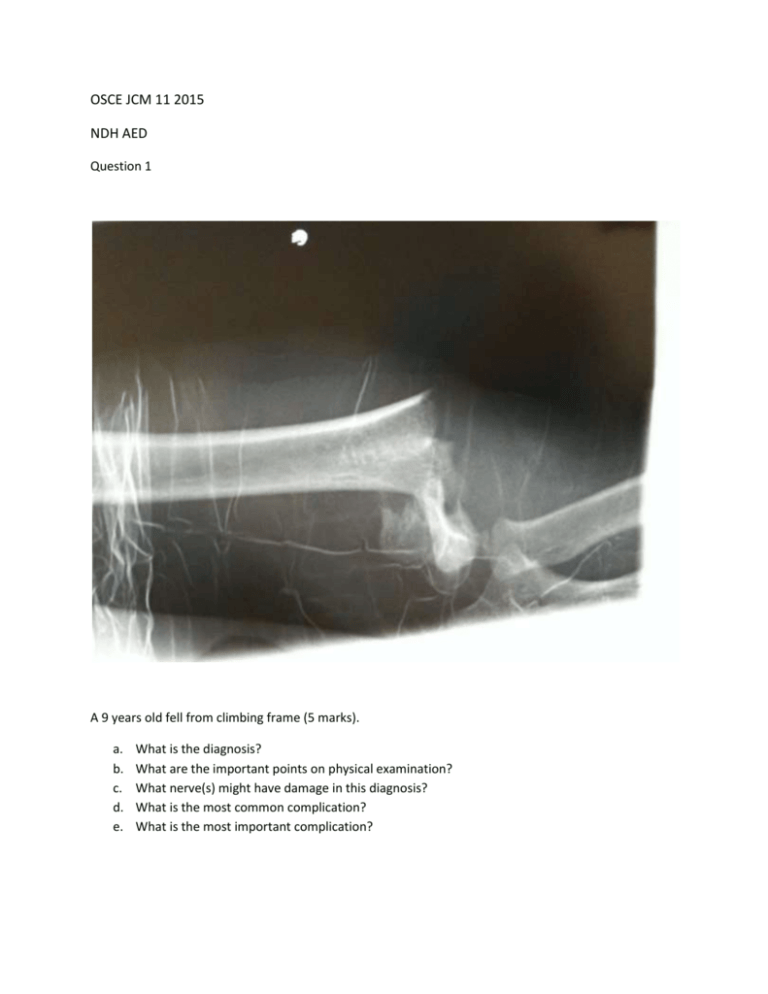OSCE (Question)
advertisement

OSCE JCM 11 2015 NDH AED Question 1 A 9 years old fell from climbing frame (5 marks). a. b. c. d. e. What is the diagnosis? What are the important points on physical examination? What nerve(s) might have damage in this diagnosis? What is the most common complication? What is the most important complication? Question 2 A 40 years old man complained palpitation for 1 hr. a. b. c. d. e. What are the ECG findings? What is the diagnosis? What is the most common form of this dysrrhymia? What is the first line treatment? What is the definitive treatment? Question 3 A 59 years old man presented with headache and unsteady gait x 4 days, he had no history of head injury with GCS 12/15, equal & reactive pupils on physical examination. a. b. c. d. e. What is the diagnosis? What other investigations to confirm the diagnosis? Apart from Hunt & Hess grading system, what is the other grading system? What I the name of scale to predict the likelihood of cerebral vasospasm? What are the common complications (3 marks)? Question 4 a. b. c. d. What is the diagnosis? What are the symptoms and signs? What is the test useful in making the diagnosis? What are the most important points during treatment? Question 5 A 3-year-old boy was found in distress while playing alone with toys. On arrival, he was cyanotic and respiratory rate was 8/min. Pulse was only palpable in carotid arteries. He was transferred to the resuscitation cubicle and the initially ECG rhythm strip showed sinus bradycardia of rate 50/min. a. b. c. d. e. How you manage this child? (4marks) Size of ET suggested What should you do if no intravenous access is established? Where will you insert the IO needle? What are the complications of IO procedure?











